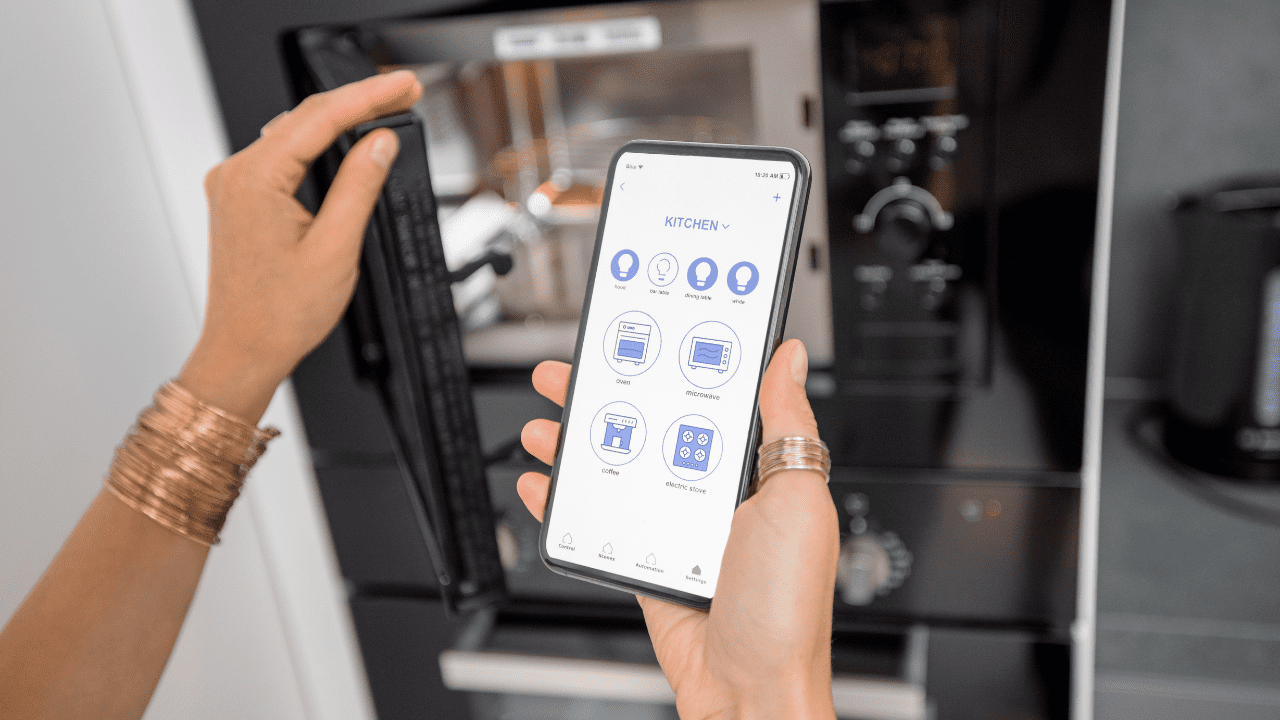
Home automation is no longer limited to the elite or high-end housing units, nor is it being adopted solely by consumers with secondary residences, or requiring consumers to have a Ph.D in engineering to operate these devices. As part of the surging “healthy home” trend, numerous smart products are becoming ubiquitous in homes across America—and even more families would like to see the integration of such systems and products. With a new generation, primarily consisting of millennials, gaining purchasing power within the housing industry, this trend is likely to stick around.
High Demand Smart Home Automation Categories
Not only are people eyeing home automation for upcoming remodeling projects, but they’re also weighing existing smart features as part of their home-buying process. According to research from The Farnsworth Group and Harvard Joint Center for Housing Studies, some of the most desired smart home products include:
- automatic faucets
- hands-free/smart toilets
- wireless-connected appliances
- smart thermostats
- smart lighting
- remote security system controls
- heated driveways and walkways
- smart home theater and audio systems
Over the past couple of years, the COVID-19 pandemic has uniquely impacted two areas of home automation: touchless devices and health-related tech. The touchless concept has typically been associated with public and commercial spaces, but the pandemic brought the concept home for many people, exposing opportunities to integrate touch-free appliances, light switches, doorbells, and other products into residential spaces.
In terms of health and wellbeing, homeowners are showing an increased interest in smart devices that control their indoor environment like smart thermostats with humidity sensors; smart air conditioners and air purifiers; smart water filtration systems; and smart lighting that aligns with the circadian rhythms of the human body.
Demand for Smart Home Devices has been growing steadily for the past several years, and increased further during 2020 and 2021. Both as lifestyle devices within primary residences and as convenience and security measures for secondary residences, a range of smart home automation devices are desired by property owners.
Consumer Push for Integrated Homes
Beyond individual products and systems, homeowners are interested in the concept of integration as a whole. In other words, how well is their smart home tech incorporated into their home? Do all the individual pieces work well together? As more smart devices become capable of communicating with one another, this connectivity and integration—and the ability to seamlessly expand a smart home system—will remain a primary concern for consumers.
Along the same lines, the future of the smart home revolves around ease of use. This trend is a bit cyclical. As smart devices become easier to use, they become more accessible to and adopted by homeowners. As more homeowners demonstrate demand for automated systems and products, manufacturers should be motivated to continually improve ease of installation and use.
The Subsequent Digitization of the Purchase Experience
In the ever-evolving digital age, the channels of distribution for building materials and smart products are also shifting. Thanks to the Internet and wireless connectivity, homeowners and renters are increasingly capable of installing their own systems and products, which means they rely less on traditional services through a professional channel, such as a service provider or installer.
The diversity of distribution channels includes wholesalers, big-box stores, showrooms, and online retailers. However, while manufacturers are seeing a demand to develop products that individuals can easily install on their own, home centers, wholesalers, and online retailers also capture a specific segment of consumers by employing system integrators and other professionals who are knowledgeable about installation and can answer questions from homeowners.
With the rise in demand for DIY products, online retailers can stay competitive by providing ample information that empowers homeowners and renters in their decision-making process. Even if they opt to make their purchase in person at a big-box store or home automation center, online research is a typical part of the consumer buying journey.
The Broadening Building Product Ecosystem
Additionally, utility and insurance companies have emerged as an effective building product channel stakeholder for increasing the adoption of smart home devices and systems. Homeowners who learn about a product or system through these sources have a high probability of making their purchase directly from the manufacturer.
Ultimately, channel diversification can help manufacturers of smart home products and systems connect with a wide variety of individuals, systems integrators, and other stakeholders to innovate for the changing purchasing behaviors of the modern homeowner and renter.
FAQs
Q: What are some popular smart home automation categories?
A: Some popular smart home automation categories include automatic faucets, smart thermostats, wireless-connected appliances, smart lighting, and remote security system controls.
Q: What is the future of the smart home?
A: The future of the smart home revolves around integration, ease of use, and the ability to seamlessly expand a smart home system.
Q: How has the COVID-19 pandemic affected home automation?
A: The pandemic has increased the demand for touchless devices and health-related tech in home automation, as people look for ways to minimize contact and improve their indoor environment.
Conclusion
As the demand for smart home devices continues to grow, manufacturers are focusing on integration, ease of use, and connectivity between different devices. Homeowners are increasingly interested in the concept of an integrated smart home system, where all the devices work together seamlessly. The COVID-19 pandemic has also highlighted the importance of touchless devices and health-related tech in home automation. With the rise of DIY products and the digitization of the purchase experience, homeowners have more options when it comes to installing and researching smart home products. Overall, the future of the smart home looks promising, with innovations and advancements making automation more accessible and convenient for everyone.
[Instant Global News](https://instantglobalnews.com/)
